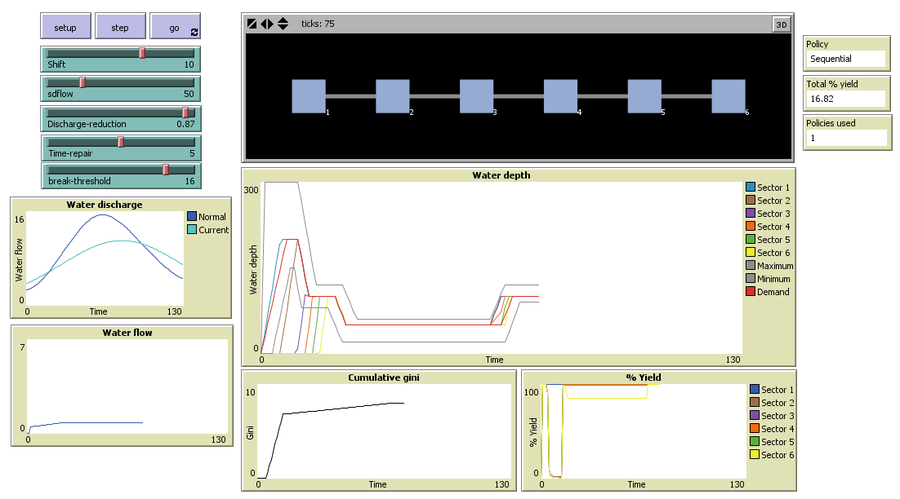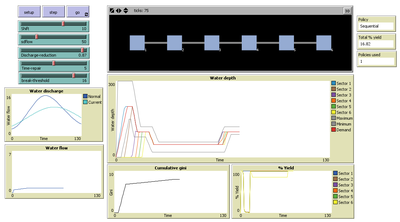ABM mobility 1.0.0
The MOBILITY model is a stylized representation of a dynamic population of agents moving and harvesting a renewable resource. Cooperators (harvest an amount close to the maximum sustainable yield) and selfish agents (harvest higher levels of resource) are simulated in the model. The purpose of the model is to analyze how agents’ mobility (i.e. the extent agents can move) affects the performance of social-ecological systems in different landscape configurations (spatial distribution of resource richness: homogeneous, uniform, normal, and exponential). Three indicators of the outcomes of the system are analyzed: number of settlements, resource level, and proportion of cooperators in the population.

